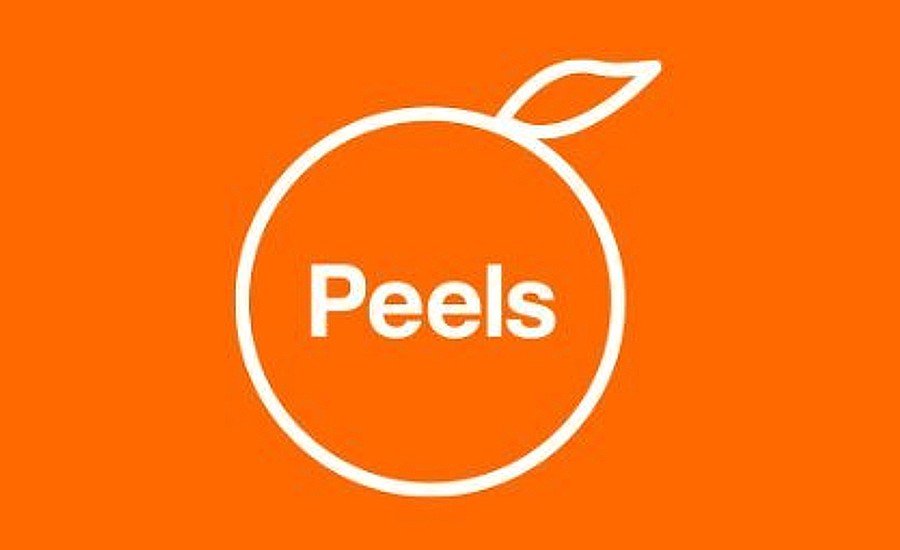Last Week In Weed Issue 34
Published August 10th 2021
This week in Last Week in Weed, we’ll be looking at Seattle-based cannabis website Leafly preparing to go public via a SPAC, GW Pharmaceuticals flagship product Sativex being trialed on Glioblastoma in the UK, and finally, a former NFL player launching a synthetic CBD ‘wellness’ brand named ‘Peels’ that is made from orange peel.
Leafly set to go public via SPAC
First up this week is the news that Leafly, the Washington-based online cannabis education and retail website founded in 2010 is set to go public via a Special Purpose Acquisition Company (SPAC). The cannabis-focused media outlet was founded in 2010 by three California engineers seeking to create a central resource hub for cannabis consumers and the emerging industry.
The company was bought by the private equity group Privateer Holdings in 2012, the 76% majority owners of Tilray retained ownership of the company until 2019 when Leafly became a wholly independent business. The founders left the business shortly after the acquisition by Privateer Holdings to start a new rival company called Headset.
The SPAC looking to take Leafly public by floating it on the Nasdaq later this year is a blank-cheque company called Merida Capital Holdings. A company named after the Aqueduct of the Miracles, one of the most innovative infrastructure projects in human history. A rather grandiose naming decision, if you ask me.
Merida Capital Holdings is a private equity firm ‘that targets fundamental growth drivers underpinning the rapid development of the cannabis industry.’ So basically they’re true-blooded capitalist opportunists attempting to cash in on the so-called green rush. No different from many of the other SPAC’s exploiting the ignorance and excitement of the current climate to profit from the golden age of cannabis.
Leafly is certainly an attractive prospect for Merida, as half of all US dispensaries now use the platform for e-commerce, advertising, and other services in some way. The company now boasts 220 million unique views a year, up 12% in 2019. Since the company began it has completed over 4 million orders, published 1.3 million reviews, and compiled a database of over 5,000 unique cannabis cultivars. Well, ‘strains’ according to Leafly, but that’s a different conversation for another blog.
If the deal goes through it would see Leafly worth a staggering $530m. The newly restructured company would retain its current CEO but would have to place at least one member of Merida on the company’s board. I do not doubt that the floating of WeedMaps on the Nasdaq earlier this year will be a strong motivator for Leafly to complete this deal in good time.
GW’s Sativex in UK brain tumour trial
It was announced last week that GW Pharmaceuticals flagship product, Sativex would be used in a ‘world first’ trial. The trial is to see if the decades-old drug can improve the efficacy of chemotherapy to help treat Glioblastoma, an aggressive form of brain and spinal cancer.
The announcement that a phase two trial would take place followed the publication of the ‘successful results’ in the phase one study earlier this year. The phase one trial was considered to be a success because more of the Sativex group than the placebo group remained alive after 1 year of observation and treatment.
The new phase two trial, which is curiously named ‘ARISTOCRAT’ will run for three years. The study will be conducted by the University of Leeds, funded by The Brain Tumour Charity, and coordinated by Cancer Research UK Clinical Trial Unit at the University of Birmingham. Should the trial be able to raise sufficient funds, 230 patients with Glioblastoma from around the UK will be selected to take part in the trial in early 2022.
Speaking to Cannabis Health Magazine Professor Susan Short, the principal trial investigator and Professor of Clinical Oncology and Neuro-Oncology at the University of Leeds said. “The treatment of glioblastomas remains extremely challenging. Even with surgery, radiotherapy, and chemotherapy, nearly all of these brain tumours re-grow within a year, and unfortunately, there are very few options for patients once this occurs.
Glioblastoma brain tumours have been shown to have receptors to cannabinoids on their cell surfaces, and laboratory studies on glioblastoma cells have shown these drugs may slow tumour growth and work particularly well when used with temozolomide.
“Having recently shown that a specific cannabinoid combination given by oral spray could be safely added to temozolomide chemotherapy, we’re really excited to build on these findings to assess whether this drug could help glioblastoma patients live longer in a major randomised trial.”
Glioblastoma is considered to be the most aggressive type of cancer that starts in the brain. The typical duration of survival for Glioblastoma is between 12 – 15 months, with fewer than 5% surviving beyond five years. This makes it a prime candidate for researching the effects of cannabis on cancer. Why they have decided to include chemotherapy alongside it is truly beyond me.
Chemotherapy kills healthy cells in the body and according to a 2016 study published in The Lancet “patients dying within 30 days after beginning treatment [with chemotherapy] are unlikely to have gained the survival or palliative benefits of the treatment, and in view of the side-effects sometimes caused, are more likely to have suffered harm”
We know from cancer survivors and healthcare professionals that surviving cancer with chemotherapy drugs can cause some horrific and devastating consequences and life-long side effects. We have also known for quite some time that THC can causes apoptosis in cancer cells and that it can be an effective treatment and prophylactic for a variety of different types of cancers.
“We hope this trial could pave the way for a long-awaited new lifeline that could help offer glioblastoma patients precious extra months to live and make memories with their loved ones. “With so few treatments available and average survival still so heartbreakingly short, thousands affected by a glioblastoma in the UK each year are in urgent need of new options and new hope” –Dr David Jenkinson, CEO, The Brain Tumour Charity
While I applaud and admire the passion and commitment of the individuals involved in these trials, I cannot help but feel this is little more than a publicity stunt for the new owners of GW Pharmaceuticals. Jazz Pharmaceuticals are after all an oncology and neuroscience specialist biopharmaceutical company.
When Jazz acquired GW for £5.2billion earlier this year they also purchased its intellectual property and patents. Some of those patents are for;
Use of a combination of delta-9-tetrahydrocannbinol and cannabidiol in the treatment of brain cancer (2008)
So if they already have patents and proof in animal models for the application of cannabinoids to treat cancer going back over a decade, why is The Brain Tumour Trust having to raise £450,000 to fund this trial. Shouldn’t the main player set to benefit from any proof of concept and the patent holders of the drug pay for the trial?
Former NFL star launches synthetic CBD made from Orange Peel
A former NFL player in the US has launched a synthetic CBD ‘wellness’ product that is derived from orange peel. Peels, the brand founded by 11-year NFL veteran Chris Hetherington hopes to exploit the current limitations in the ignorant legislation and public skewed perception by providing a fully synthetic CBD analog that mimics Cannabidiols effects in the body.
“As our CBD is made from orange peels, we have a tremendous opportunity to reach target audiences and potentially enter channels our competitors cannot, thus expanding the existing CBD market and improving the lives of more people” – Chris Hetherington
The former fullbacks business model is to attempt to dominate potential consumer bases that cannot risk even the smallest amount of THC finding its way into their system. Be they athletes, police, first responders, military personal, or any other individual that are subjected to random drug tests as part of their employment.
Peels uses a ‘proprietary process to derive premium-quality CBD from orange peels’ called Cyclic Terpene Assembly, a process that combines organic molecules without solvents protecting the compounds within. During the mixing process terpenes derived from the orange peel are mixed with Olivetol, a naturally occurring compound, then the mix is then heated and pressurised along with a catalyst. Once refined the result is a crystalline synthetic CBD analog that Peels claims is ‘unmatched in purity and consistency.’
“There are so many benefits to this amazing herbal supplement and we’re excited to finally offer 100 percent certified THC-free and Pesticide-free products for those who’ve been reluctant to try CBD in the past. “With Peels, we’re taking all of the impurities and inconsistencies out of the equation. We believe our CBD products deserve a spot right next to your vitamins as part of your daily wellness ritual”
“Our priority will always be putting our consumers first by continuously innovating and developing data-driven and science-based products to meet their wellness needs. We’re extremely proud of our CBD Oil and we know Peels is going to revolutionise the way people view and use CBD” – Chris Hetherington
The creation of synthetic cannabinoids is nothing new, big pharma has been creating and researching these compounds for decades. In fact, some of the most popular ‘strains’ of ‘Spice’ were created in the laboratories of various pharmaceutical companies around the world.
Synthetic cannabinoids are less effective than phytocannabinoids. They have also been shown to have a far higher likelihood of developing dependency issues and presenting unwanted side effects. The dangers that synthetic cannabinoids pose are evident in the current mental health crisis affecting various prison populations in the UK.
So why are so many companies trying to discover and patent new novel ways of synthesising cannabinoids? One word, Profit! You cannot patent nature, but you sure can patent synthetic compounds and their production and extraction processes.
Written By Simpa For The Simpa Life



